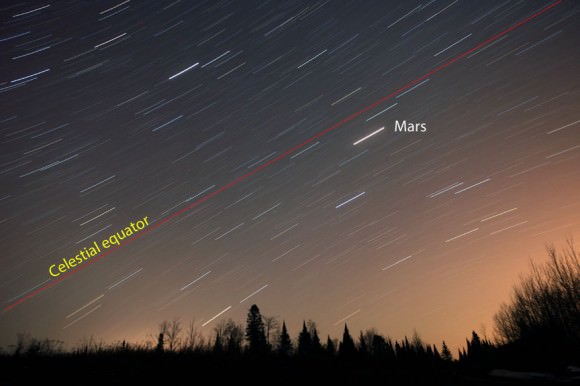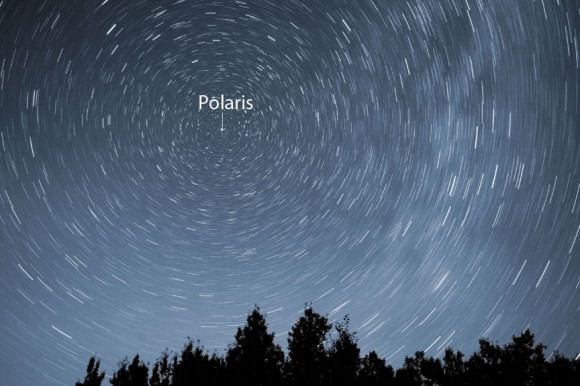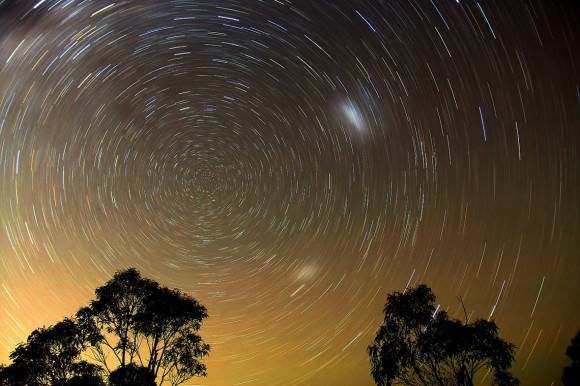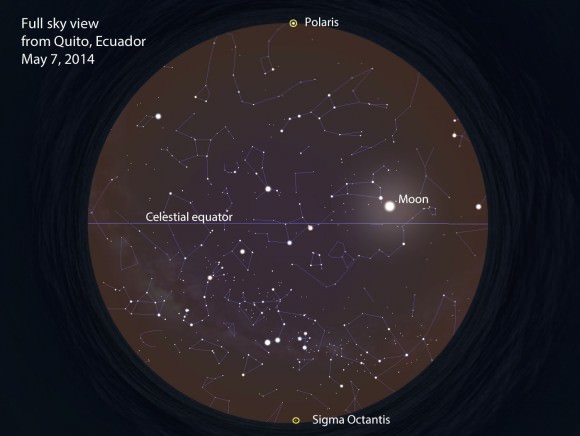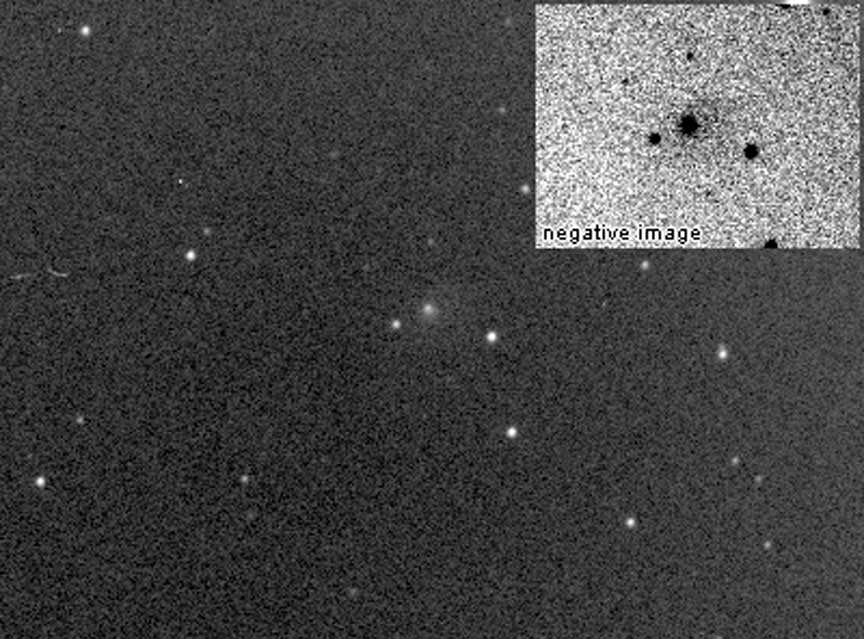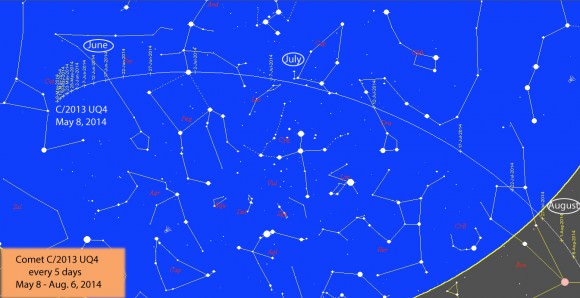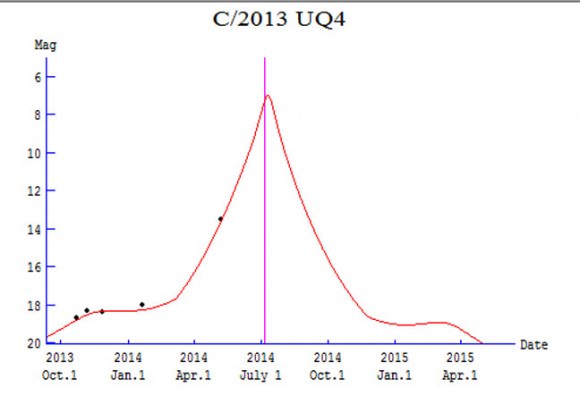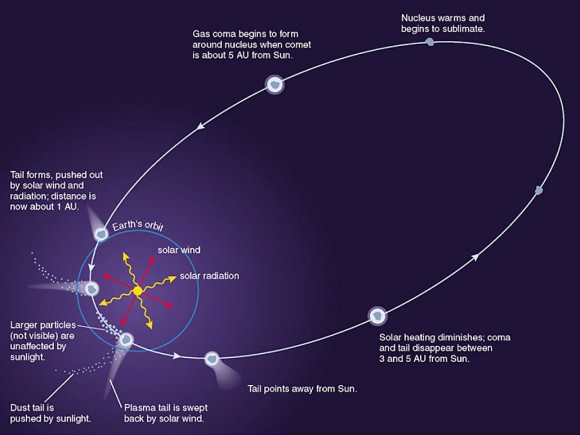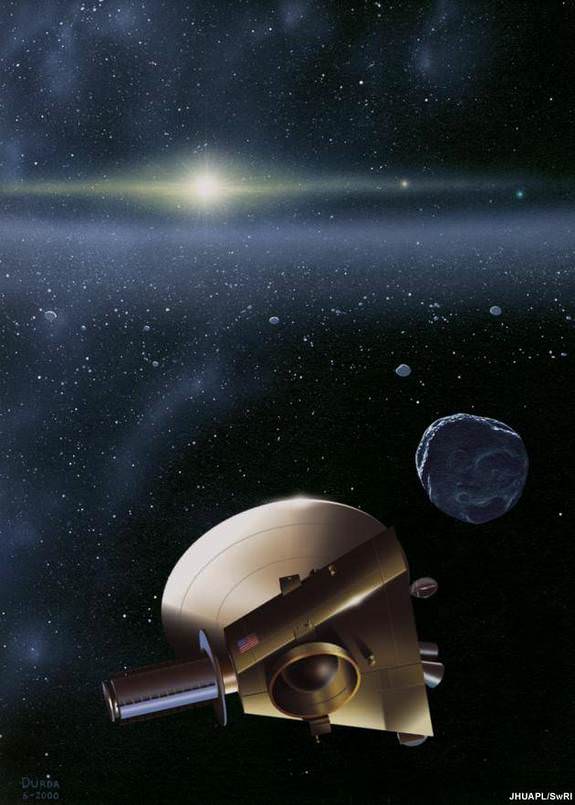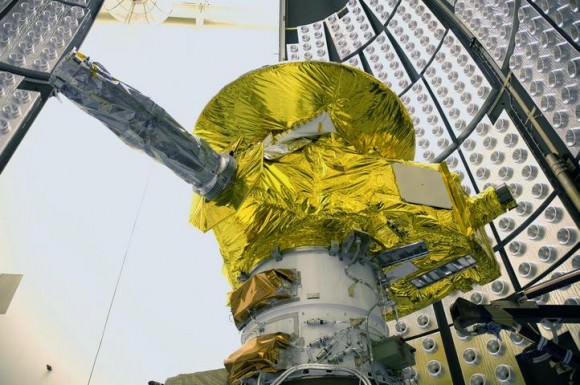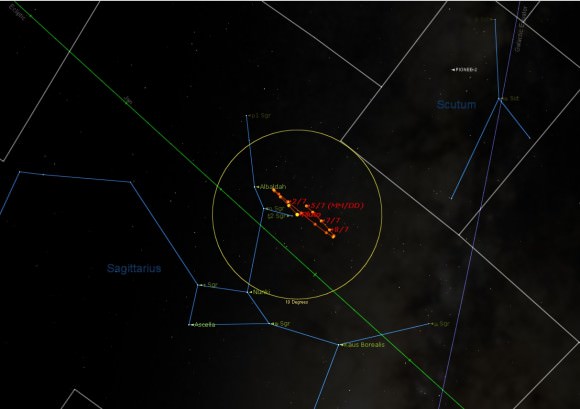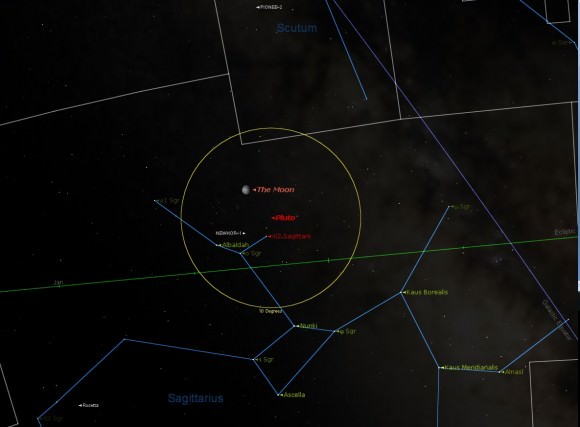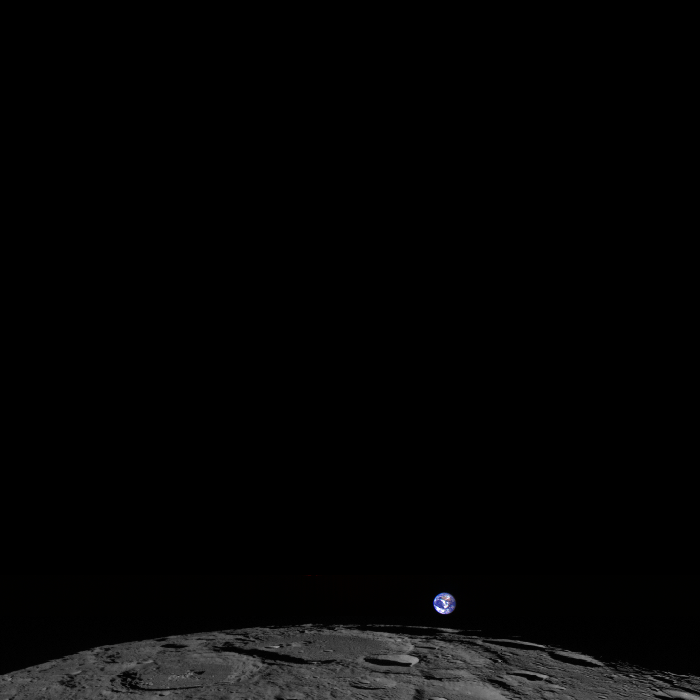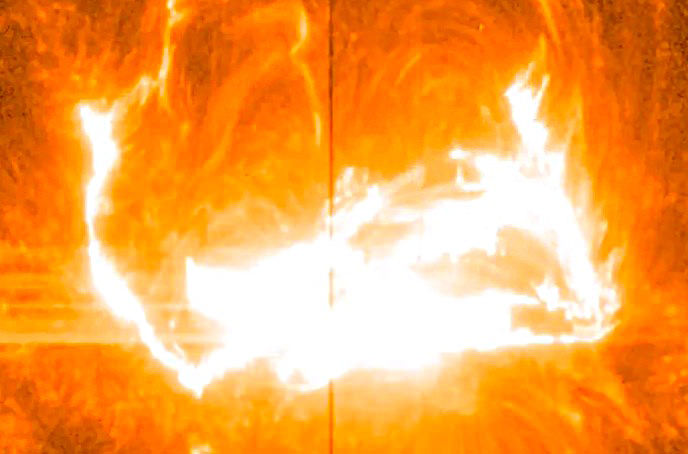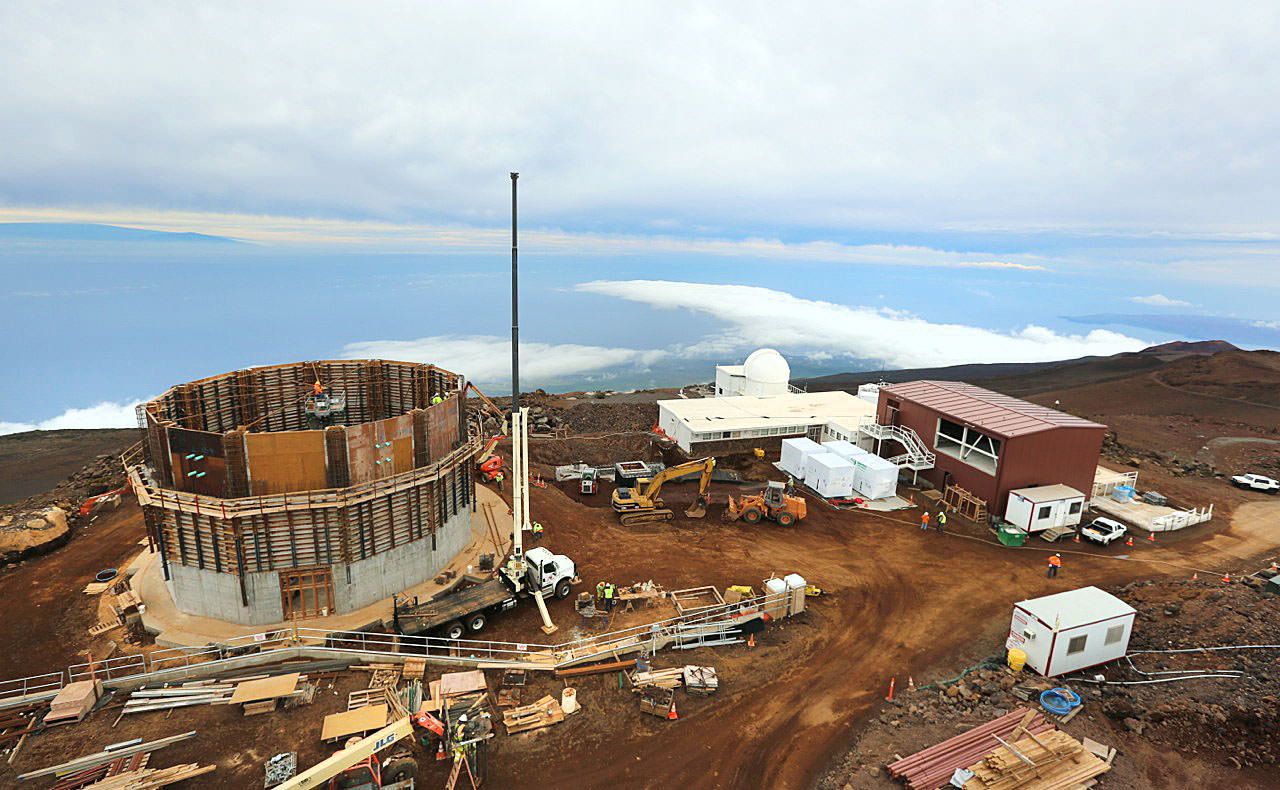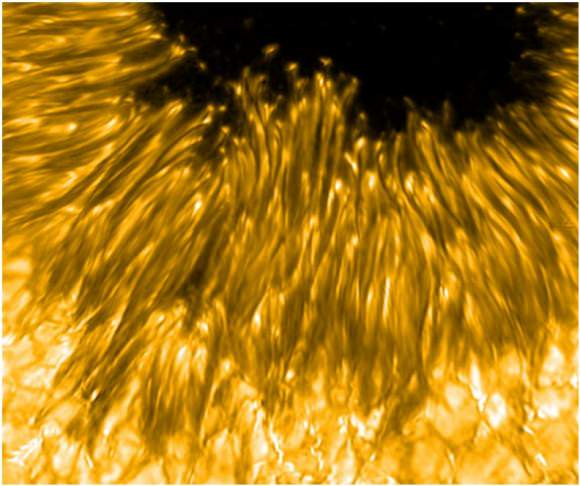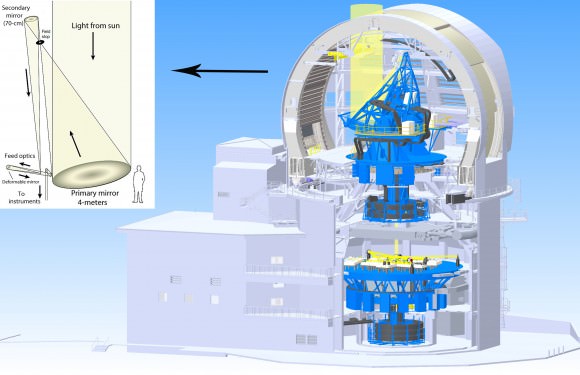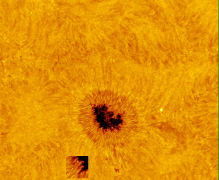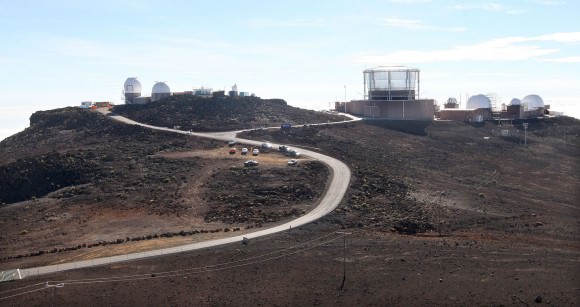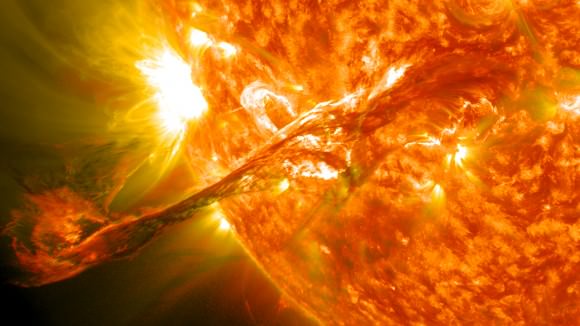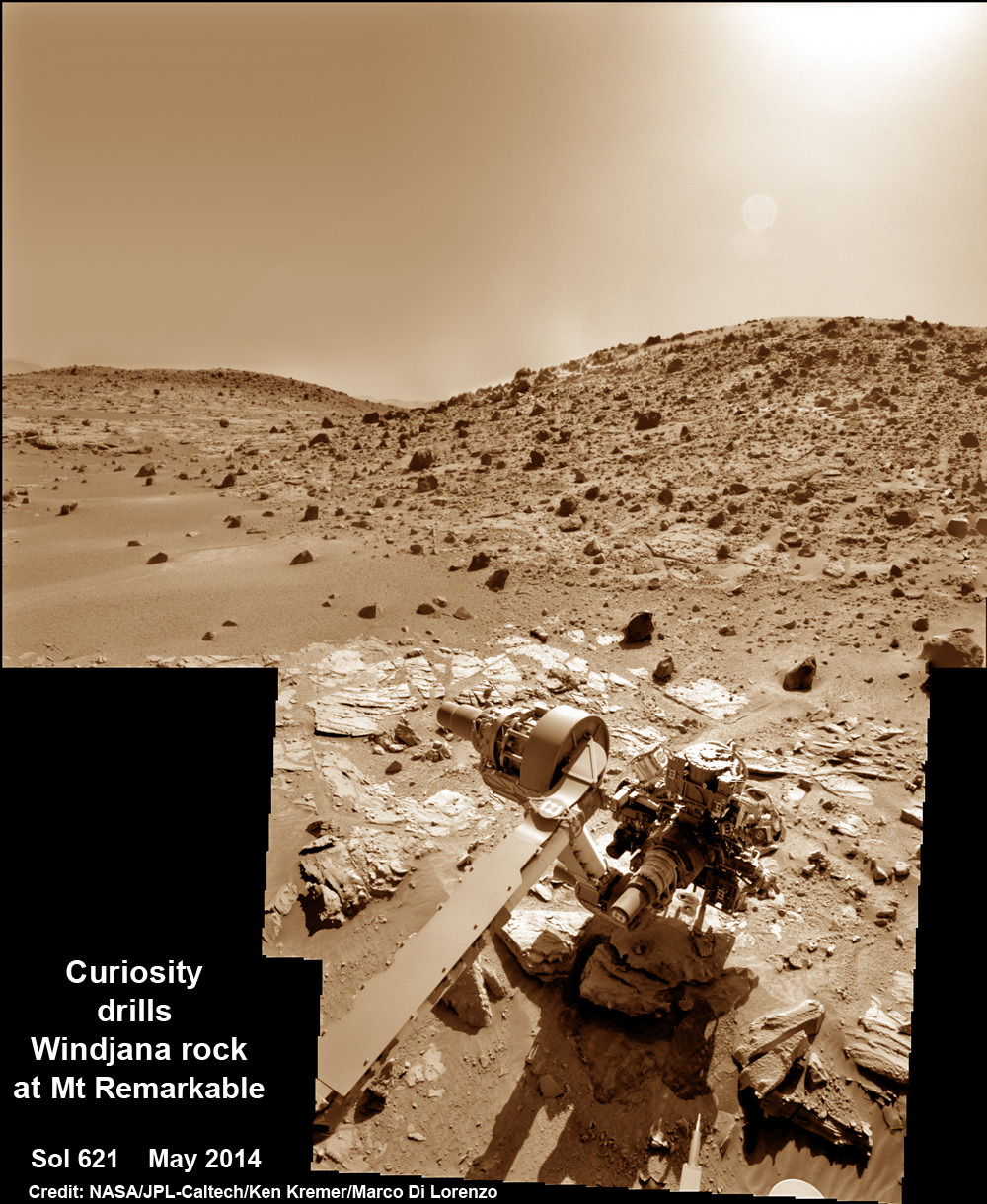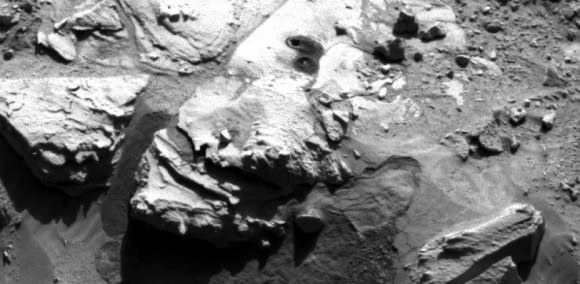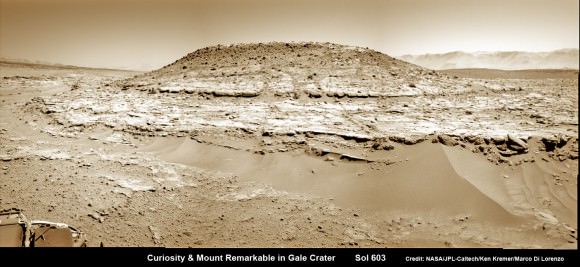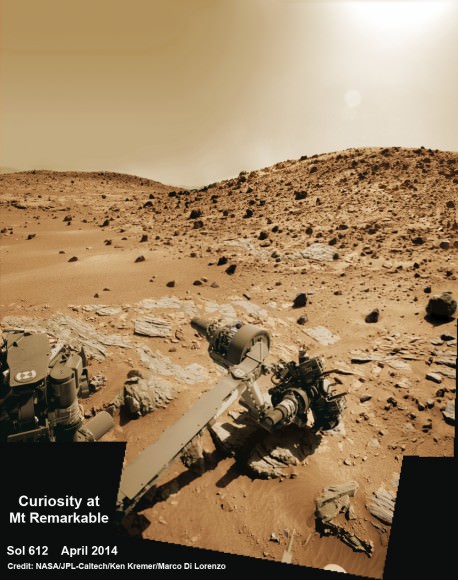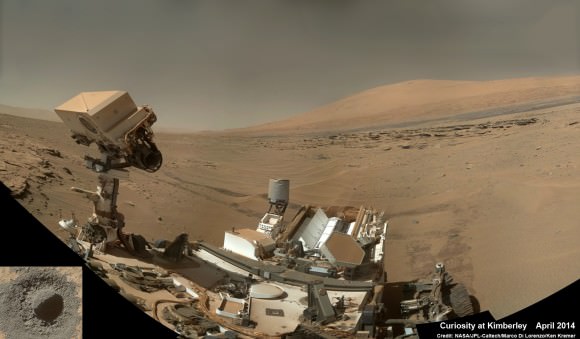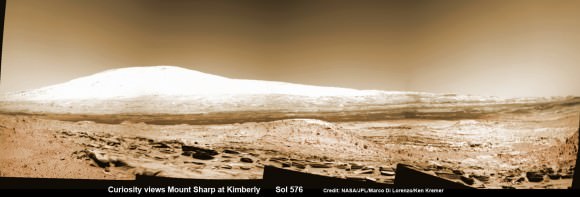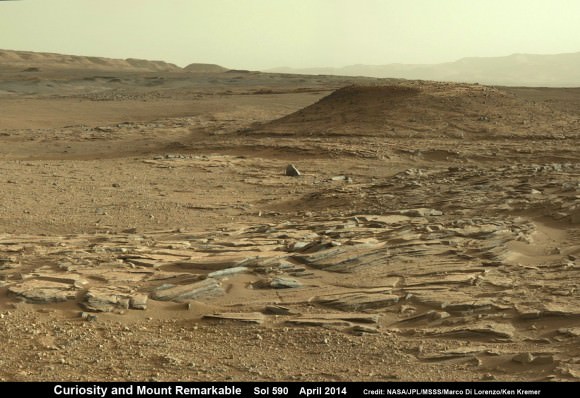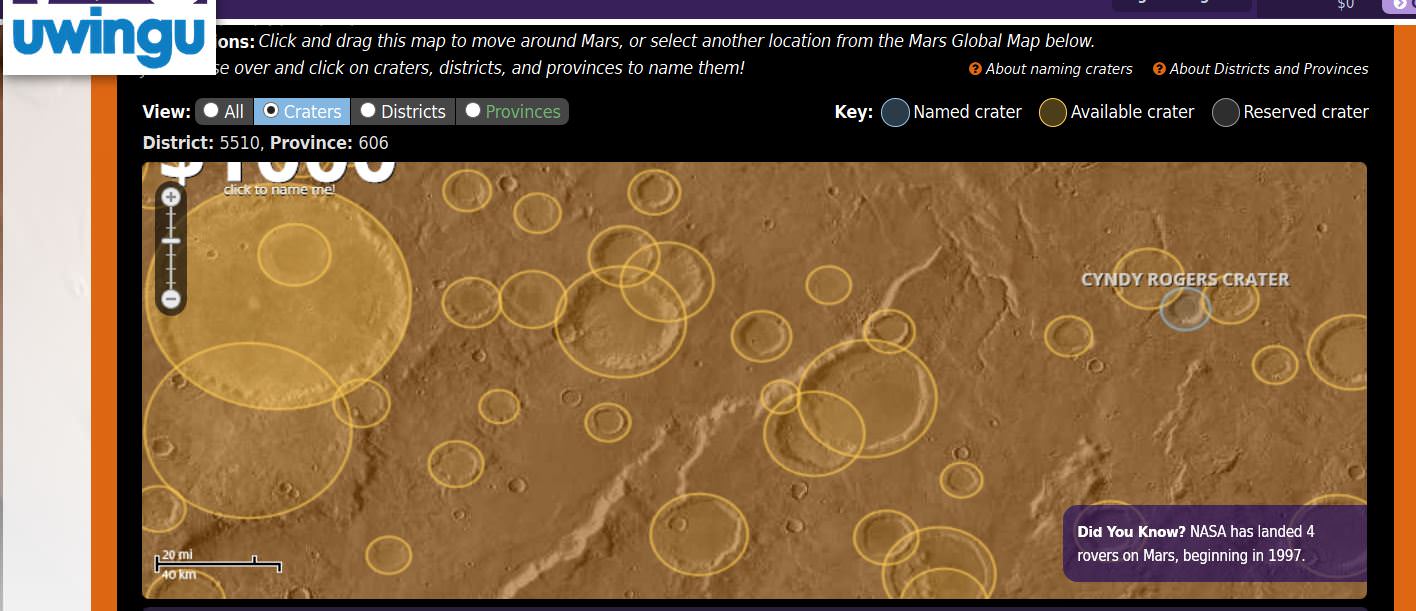It may be the chance of a lifetime for planetary science.
This October, a comet will brush past a planet, giving scientists a chance to study how it possibly interacts with a planetary atmosphere.
The comet is C/2013 A1 Siding Spring, and the planet in question Mars. And although an impact of the comet on the surface of the Red Planet has long been ruled out, a paper in the May 2014 issue of Icarus raises the interesting possibility of possible interactions of the coma of A1 Siding Spring and the tenuous atmosphere of Mars. The study comes out of the Department of Planetary Sciences at the University of Arizona, the Belgian Institute for Space Aeronomy, the Institut de Planétologie et d’Astrophysique de Grenoble at the Université J. Fourier in France, and the Cooperative Institute for Research in Environmental Sciences at the University of Colorado in Boulder.
For the study, researchers considered how active Comet A1 Siding Spring may be at the time of closest approach on October 19th, 2014.
Discovered early last year by Robert McNaught from the Siding Spring Observatory in Australia, Comet A1 Siding Spring created a stir in the astronomical community when it was found that it will pass extremely close to Mars later this year. Further measurements of its orbit have since ruled this possibility out, but its passage will still be a close one, with a nominal passage of 138,000 kilometres from Mars. That’s about one third the distance from Earth to the Moon, and 17 times closer than the nearest recorded passage of a comet to the Earth, Comet D/1770 L1 Lexell in 1780. Mars’ outer moon Deimos has an orbital distance of about 23,500 kilometres.
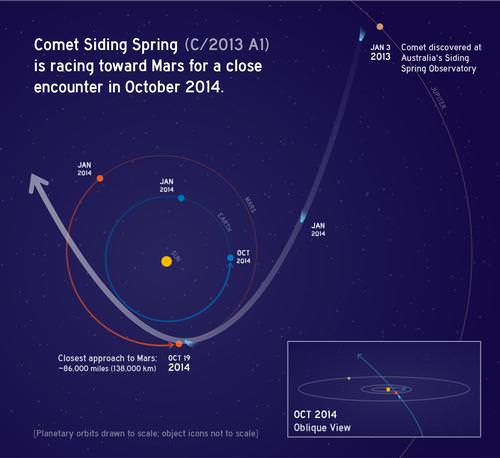
And although the nucleus will safely pass Mars, the brush with its extended atmosphere might just be detectable by the fleet of spacecraft and rovers in service around Mars. At a distance of 1.4 Astronomical Units (A.U.) from the Sun during the encounter, the vast coma is expected to be comprised primarily of H2O. At an input angle of about 60 degrees, penetration was calculated in the study to impinge down and altitude of 154 kilometres to the topside of the Martian ionosphere, in the middle of the thermosphere.
Such an effect should linger for just over 4 hours, well over the interaction period of Mars’ atmosphere with the coma of just over an hour, centered on 18:30 UT on October 19th, 2014.
What kind of views might missions like HiRISE and MSL get of the comet remains to be seen, although NEOWISE and Hubble are already monitoring the comet for enhanced activity. The Opportunity rover is also still functioning, and Mars Odyssey and ESA’s Mars Express are still in orbit around the Red Planet and sending back data. But perhaps the most interesting possibilities for observations of the event are still en route: India’s Mars Orbiter Mission and NASA’s MAVEN orbiter arrive just before the comet. MAVEN was designed to study the upper atmosphere of Mars, and carries an ion-neutral mass spectrometer (NGIMS) which could yield information on the interaction of the coma with the Martian upper atmosphere and ionosphere. The NGIMS cover is slated for release just two days before the comet encounter. All spacecraft orbiting Mars may feel the increased drag effects of the encounter.
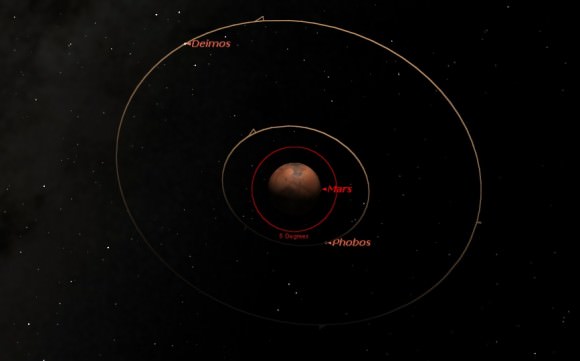
Proposals for using Earth-based assets for further observations of the comet prior to the event in October are still pending. Amateur observers will be able to follow the approach telescopically, as Comet A1 Siding Spring is expected to reach +8th magnitude in October and pass 7’ from Mars in the constellation Ophiuchus as seen from the Earth. Mars just passed opposition last month, but both will be low to the south west at dusk for northern hemisphere observers in October.
It’s also interesting to consider the potential for interactions of the coma with the surfaces of the moons of Mars as well, though the net amount of water vapor expected to be deposited will not be large.
UPDATE: Check out this nifty interactive simulator which includes Comet A1 Siding Springs courtesy of the Solar System Scope:
The H2O coma of A1 Siding Spring is expected to have a radius of 150,000 kilometres when it passes Mars, just a shade over the nominal flyby distance.
“There is a more extended coma made up of H2O dissociation products (such as hydrogen and hydroxide) that extends for ~1,000,000 kilometres,” researcher at the Department of Planetary Sciences at the University of Arizona and lead author on the paper Roger Yelle told Universe Today.
“Essentially, Mars is in the outer reaches of the coma. The main ion tail misses Mars but there will be some ions from the comet that do reach Mars. The dust tail just misses Mars, which is fortunate.”
The paper also notes that significant perturbations of the upper atmosphere of Mars will occur if the cometary production rate is 10^28 s-1 or larger, which corresponds to about 300 kilograms per second.
“The MAVEN spacecraft will make very interesting observations,” Roger Yelle also told Universe Today. “The comet will perturb primarily the upper atmosphere of Mars and MAVEN was designed to study the upper atmosphere of Mars. Also, it’s just such an incredible coincidence that the comet arrives at Mars less than one month after MAVEN does. MAVEN is nominally in its checkout phase then, and the main science phase of the mission was not scheduled to start until November 1st. However, we are reassessing our plans to see what observations we can make. It’s all quite exciting, and we have to balance safety and the desire to make the best science measurements.”
It’s an unprecedented opportunity, that’s for sure… all eyes will be on the planet Mars and Comet A1 Siding Spring on October the 19th!



